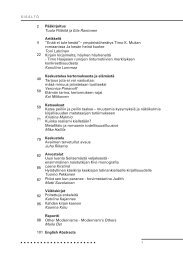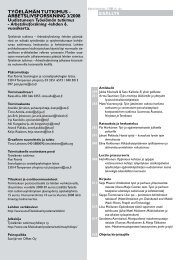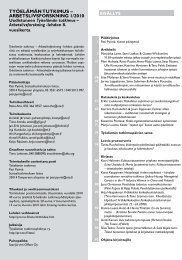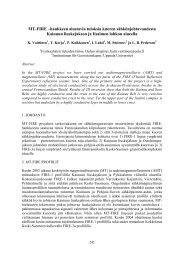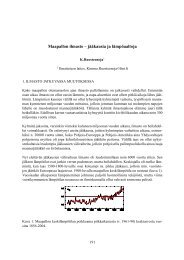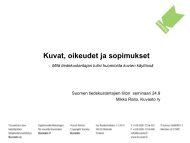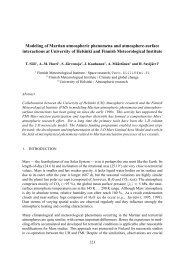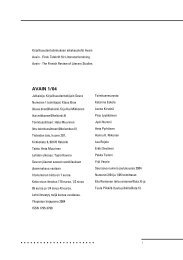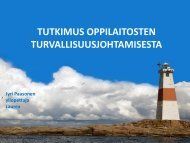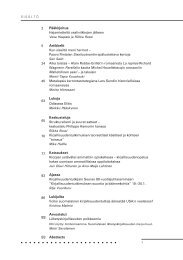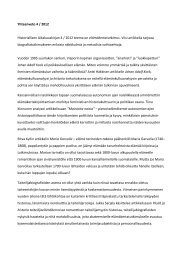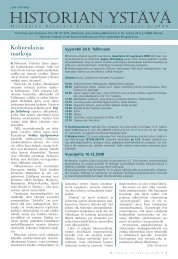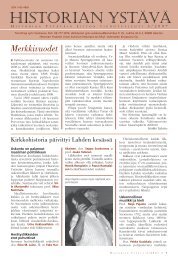Avain 4/2008
Avain 4/2008
Avain 4/2008
Create successful ePaper yourself
Turn your PDF publications into a flip-book with our unique Google optimized e-Paper software.
esseetThe dialect features here are not particularly strong, kotia for kotiin, and the droppedn in sitten. A fairly literal translation into standard English might look something likethis:Home. (pause) Home. Homeward bound. (pause). This is going pretty well ifwe’re heading towards home.But a translation like this doesn’t even come close to capturing Marja-Terttu’s ruggedindependence. I want some sort of dialect features, but not ones which are too closelyidentified with any one American region:Home. (pause) Home. Let’s git on home. (pause) This’z goin purty well if we’zheadin towards home.The English word home is soft, completely different in feel from kotiappäin. Therefore,in this version I changed the structure, giving myself the hard t and g sounds in let’s giton home. 14 If I wanted to make Marja-Terttu a bit coarser, I might turn the final sentenceinto a negative:or,This ain’t goin so bad if this’z the way home.This ain’t goin so bad if we’re goin in the right direction.A choice like right direction eliminates the repetition on kotiappäin in the Finnish, butthe alliterative r and the dental sounds, both voiced and unvoiced (d and t), sound givethe actor a lot to work with. I suspect the latter line is also more likely to get a laugh. 15Several or even all the characters in a play might speak the same dialect, but theyare likely to be different in respect to age, gender and class. In the theater, these attributesare primarily indicated through visual means, through casting and costumes. Butplaywrights have their own means of indicating such characteristics in the text. Fromthe point of view of translating from Finnish into English, the biggest challenge comesin dealing with effects which can be made rather easily in Finnish through politenessforms and the distinctions between more formal book language and informal spokendialects. Adding colloquial or dialectal elements quickly lowers class in English in a wayit doesn’t necessarily do in Finnish. The following example is taken from the beginningof Olga, where Rundis, a young cleaner/thief, is first visiting Olga’s home. Olga has alreadybeen introduced to us as a tough old cookie, sharp and sarcastic, but in this socialsituation she uses formal language, including the polite forms of the command:OLGA: Menkää kotiinne vaan. Menkää menkää! Minun tyttäreni teidätkutsui. Ei hän olisi muuten uskaltanut, mutta hän asuu Espanjassa. Menkäämenkää.44Kirjallisuudentutkimuksen aikakauslehti AVAIN • <strong>2008</strong> • 4




